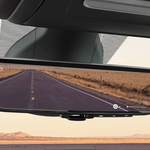
Usage based insurance could be an option to lowering your insurance rates.
Advancements in driving technology has brought all types of changes to the driver's experience.
From real-time traffic updates to advanced safety features, vehicle tech has strived to make the driving experience more convenient and pleasurable.
The automobile insurance industry has begun using vehicle tech to monitor individual driving habits to generate more accurate insurance rates. At least that's the promise the industry makes to potential buyers of usage based insurance (UBI).
How does UBI auto-insurance compare to traditional insurance policies?
From a coverage perspective, customers get the same protection with UBI as they would with traditional insurance coverage. UBI differs in the fact that it utilizes a driver's actual driving to determine rates.
Traditional insurance relies on actuary science to predict individual driver risk. With traditional insurance rates, insurers use factors such as an individual's income, credit rating, age and other general factors to determine risk and therefore insurance rates.
UBI determines rates not on general characteristics, but actually bases rates on how well an individual drives. UBI rates will be based on actual driving habits such as:
- Speed
- Acceleration
- Hard braking
- Hard cornering
- Miles driven
- Time of day
- Phone use while driving
The insurer incorporates the use of telematics to record these various factors.
Driving data is collected in these ways:
- Through systems built into your car
- Through a device plugged into your car’s on-board diagnostics (OBD-II) port
- Through a smartphone app
- Through a device called a “tag” that is installed on your windshield or rear window and pairs with your smartphone via Bluetooth
Will UBI lower your auto-insurance rates? That depends upon how well you drive.
UBI can benefits drivers because it will base rates on how well you drive as an individual—not on general statistics determined by similar grouping of drivers by various characteristics.
For younger drivers, this could bring big benefits. Younger drivers as a whole tend to have less safe driving habits. But a younger driver with exceptionally safe driving habits could get better rates.
How drivers perceive their driving habits could conflict with how the insurer judges the drivers habits. Who knows a driver who considers themselves an 'unsafe' driver?
Most people will consider themselves a 'safe' driver simply by the fact they haven't had an accident or ticket. Yet with UBI, the insurance companies use a different set of standards to define what it means to be a 'safe' driver.
Diving into a UBI-based policy could inadvertently lead to an increase in insurance rates.
In fact, a recent insurance survey by TransUnion revealed less than half of UBI customers actually received lower insurance rates. While 18% of UBI policy participants saw their rates increase.
If an insurance rate increase due to UBI telematics results in higher costs, it could take time to get lower rates. Some insurers actually levy penalties in the form of rate increases if the driver decides to opt-out of a UBI policy.
UBI can be a hassle if more than one driver regularly uses the vehicle. The telematics tools used to record driving habits doesn't necessarily distinguish between drivers. If a teen driver uses the same vehicle as their parents, the results could be skewed.
The issue of privacy can also be a concern. UBI telematics applications track all your trip information, including where you drive and when. Like traditional insurance, all that information could be sold to third parties like browsing and app information.
Then there's the issue of access. If drivers which to dispute their UBI rating, what recourse will they have to challenge results?
In the end, UBI will be another residual affect of the tech revolution. Whether it benefits the consumer and improves the industry will most likely be a give-and-take over time to reach a balance.
![banner right]()
![banner right]()











